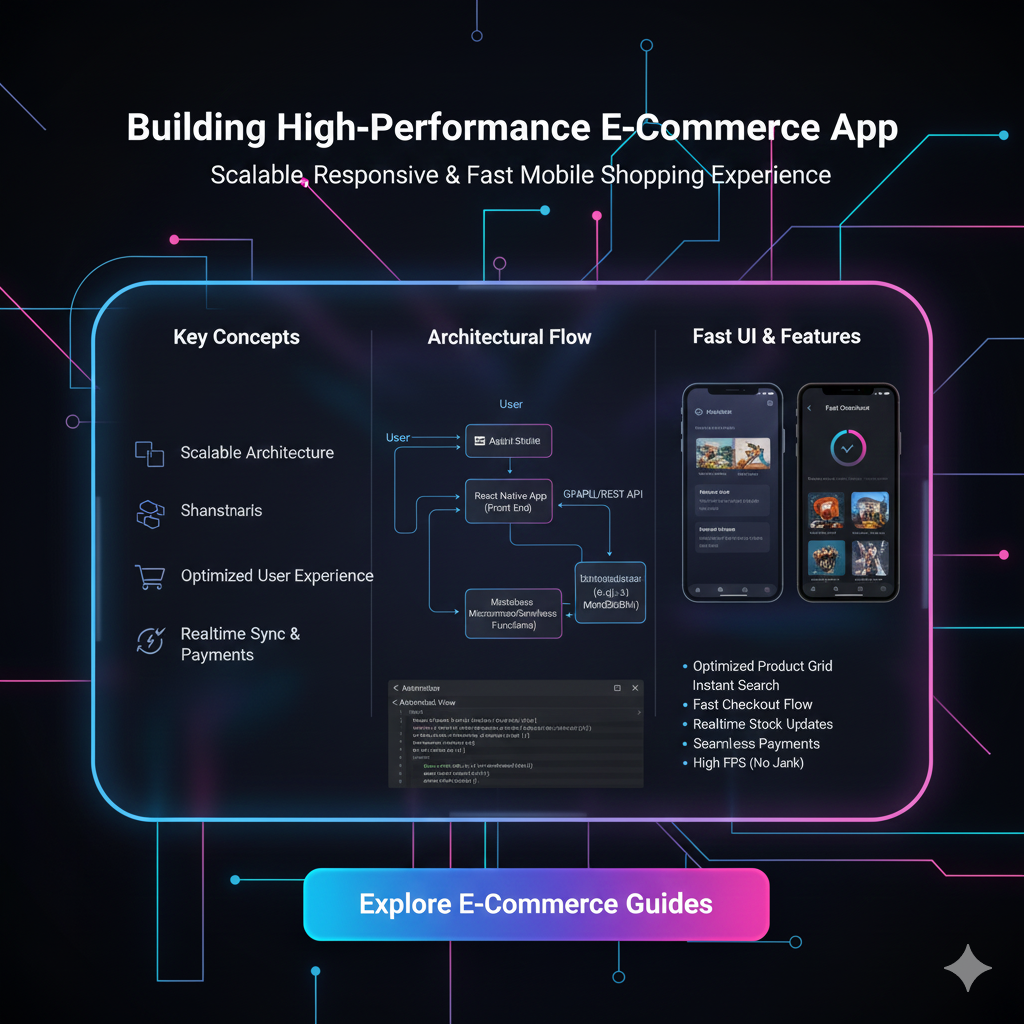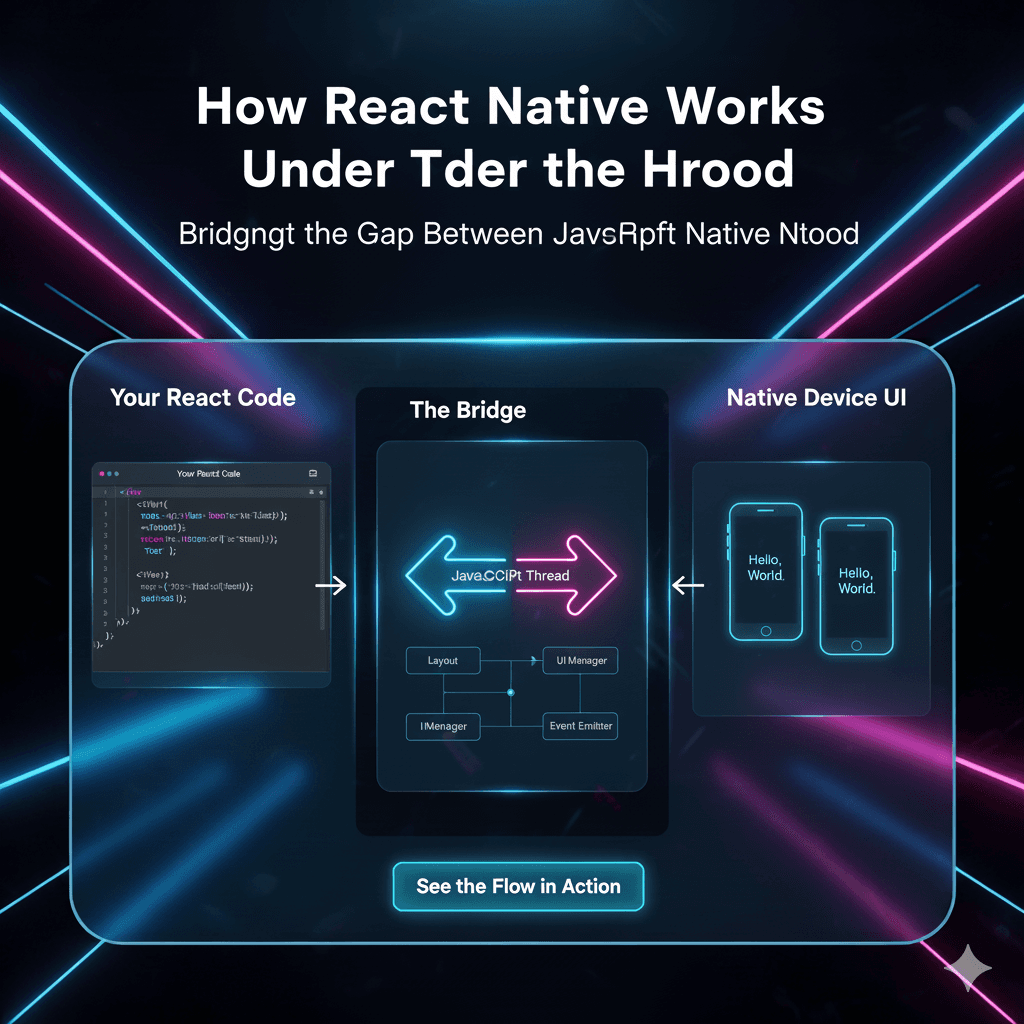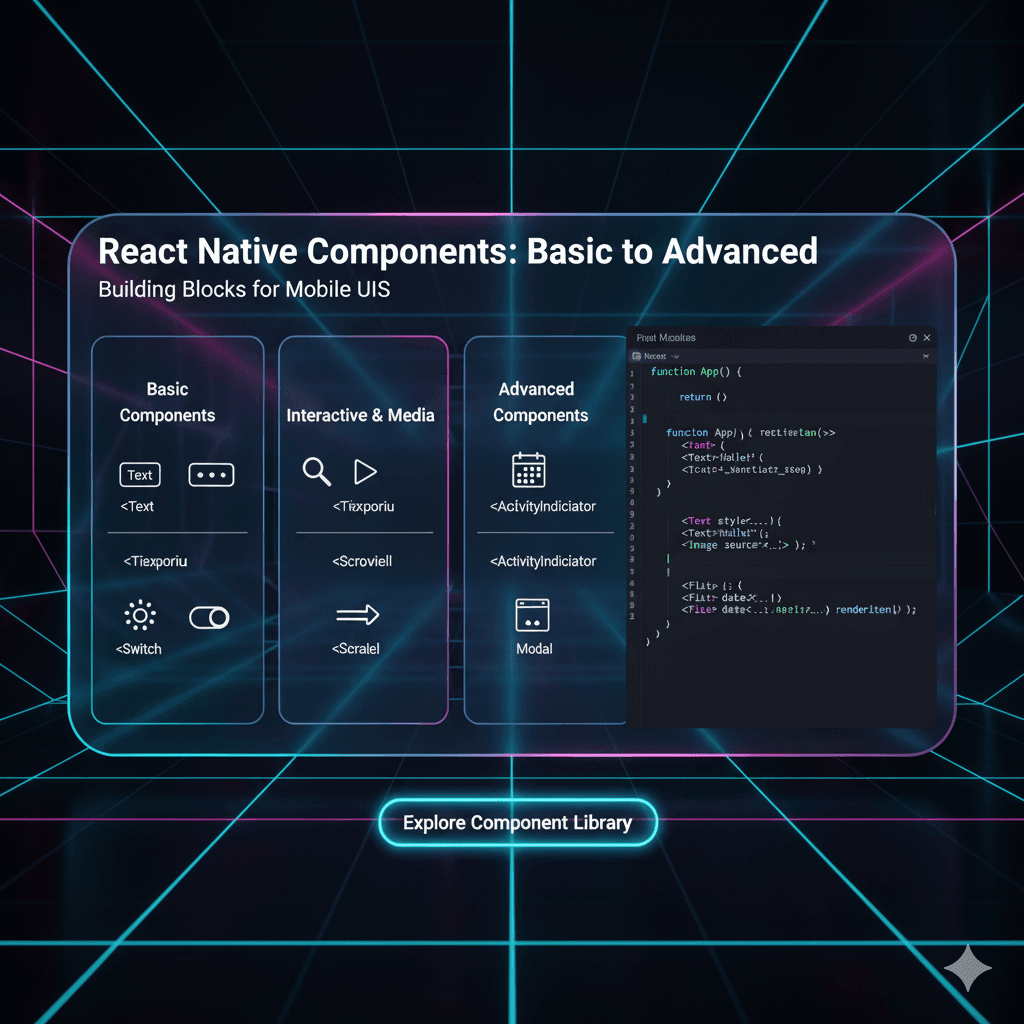Building a High-Performance E-Commerce App: The 2025 Blueprint for Speed & Sales

Tired of slow, clunky online stores? Learn how to build a high-performance e-commerce app that converts. We cover tech stacks, best practices, real-world examples, and FAQs. Level up your skills with CoderCrafter's professional courses!

Building a High-Performance E-Commerce App: The 2025 Blueprint for Speed & Sales
Building a High-Performance E-Commerce App: Your 2024 Blueprint for Speed & Sales
Let's be real for a second. We've all been there.
You're scrolling on your phone, see a cool product, click the link, and then... you wait. And wait. The images are taking forever to load. You try to add something to your cart, and it feels like you're sending a message into the void. What do you do?
You bounce. You close the tab. And that business just lost a sale.
In today's digital landscape, a slow, clunky e-commerce app isn't just an inconvenience—it's a business killer. "High-performance" isn't a buzzword; it's the baseline for survival. It’s the difference between a customer completing a purchase and them ghosting your store for a faster competitor.
So, how do you build an e-commerce app that doesn’t just function, but flies? One that feels seamless, builds trust, and actually makes money? Buckle up, because we're diving deep into the art and science of building a high-performance e-commerce application.
What Does "High-Performance" Actually Mean?
It's more than just raw speed. A high-performance e-commerce app is a holistic system that excels in several key areas:
Lightning-Fast Load Times: We're talking sub-3-second page loads. Google and users alike punish slow sites.
Rock-Solid Reliability & Uptime: Your store must be available 24/7, especially during peak traffic like Black Friday. No crashes allowed.
Scalability: Can your app handle 10, 100, or 1000 times its normal traffic without breaking a sweat?
Intuitive User Experience (UX): A smooth, logical journey from landing on a product page to clicking "Buy Now." No friction, no confusion.
High Conversion Rates: Ultimately, performance is pointless if it doesn't translate to sales. Every technical decision should be made with conversion in mind.
The Building Blocks: Your Tech Stack Matters
Choosing the right technology is like choosing the right foundation for a skyscraper. You can't build something massive on shaky ground. Here’s a breakdown of a modern, high-performance stack:
Frontend: The Face of Your Operation
Gone are the days of clunky, server-rendered pages for every click. The modern frontend is built with JavaScript frameworks.
React, Next.js, or Vue.js: These frameworks allow you to build Single Page Applications (SPAs) or use Server-Side Rendering (SSR). Why does this matter? SPAs make your app feel incredibly fast and responsive after the initial load, as it doesn't need to refresh the entire page. Next.js (a React framework) is a game-changer because it can pre-render pages on the server, which is fantastic for both speed and SEO.
Example: Think of the buttery-smooth experience on Netflix or Airbnb. That's the power of a modern frontend framework.
Backend: The Brain and Brawn
This is where your business logic, database interactions, and security live.
Node.js, Python (Django/Flask), or Go: These are powerful for handling multiple requests simultaneously. Node.js, with its non-blocking architecture, is exceptional for I/O-heavy operations common in e-commerce.
The JAMstack Approach: This is a huge trend. You decouple the frontend from the backend. Your frontend is a static site (hosted on a CDN for blazing speed), and it talks to the backend via APIs. This makes your site incredibly secure and fast.
Database: The Memory Bank
Your choice here impacts how quickly you can retrieve product info, user data, and orders.
PostgreSQL or MySQL: Reliable, robust relational databases. Perfect for structured data like user accounts and orders.
MongoDB or Firebase Firestore: NoSQL databases are flexible and can be great for certain types of product data or real-time features.
Best Practice: Many high-performance apps use a combination! A relational database for core data and a fast, in-memory database like Redis for caching (more on this later).
Real-World Use Cases & Best Practices You Can't Ignore
Theory is cool, but let's get practical. Here’s how the concepts above translate into actionable strategies.
1. Taming the Image Beast
E-commerce is visual. But high-resolution images are the number one cause of slow pages.
The Problem: A page with ten 4MB images is serving 40MB of data. On a mobile connection, that's a death sentence.
The Solution:
Modern Formats: Use WebP or AVIF formats. They can be 25-50% smaller than JPEG/PNG with the same quality.
Lazy Loading: Only load images when they are about to scroll into the user's viewport.
loading="lazy"in HTML is your friend.Responsive Images: Serve different image sizes based on the user's device. A desktop doesn't need a mobile-sized image and vice versa.
CDN for Images: Use a service like Cloudinary or ImageKit.io that automatically handles optimization, formatting, and delivery via a global CDN.
2. Caching: The Secret Weapon for Speed
Caching is like keeping a copy of your most popular products right by the cash register instead of running to the warehouse every time.
Use Case: Your homepage or a best-selling product page. This data doesn't change every second.
How to Implement:
CDN Caching: Services like Cloudflare or AWS CloudFront store a static copy of your pages on servers worldwide. When a user in London requests your site, they get it from a London server, not one in the US.
Browser Caching: Tell the user's browser to store static assets (like CSS, JS, and logos) so they don't have to be re-downloaded on subsequent visits.
Database/API Caching: Use Redis or Memcached to store the results of frequent database queries. For example, the results of "SELECT * FROM products WHERE category='shoes'" can be cached for a few minutes.
3. The Checkout Optimization
This is where you make your money. Any friction here directly impacts your revenue.
Best Practices:
Guest Checkout: Never force a user to create an account. Offer it as an option after the purchase.
Progress Indicator: A simple "Cart > Shipping > Payment > Confirmation" bar reduces anxiety.
Auto-fill Forms: Use APIs to pre-fill addresses. Every keystroke you save is a win.
Multiple Payment Gateways: Offer PayPal, Stripe, Apple Pay, Google Pay. The more options, the better.
Real-world Example: Amazon's 1-Click ordering is the pinnacle of checkout optimization. They've removed all possible friction.
Building these features requires a deep understanding of both frontend finesse and backend logic. It's the kind of skill set we focus on building at CoderCrafter. To learn professional software development courses such as Python Programming, Full Stack Development, and MERN Stack, visit and enroll today at codercrafter.in. Our project-based curriculum is designed to help you build real-world, high-performance applications from the ground up.
FAQs: Your Burning Questions, Answered
Q1: Is it better to build a custom app or use a platform like Shopify?
A: It depends. Shopify is fantastic for getting started quickly and has a lower initial cost. However, a custom-built app gives you unparalleled control over the user experience, performance, and scalability. For businesses with complex needs or those wanting a truly unique brand experience, custom is the way to go.
Q2: How important is Mobile-First design?
A: It's not just important; it's essential. The majority of online shopping now happens on mobile devices. If your app isn't flawless on a small screen, you're alienating most of your potential customers.
Q3: What's the single biggest performance killer?
A: Unoptimized media (images/video) is the most common culprit. Following closely behind are render-blocking JavaScript and unoptimized database queries.
Q4: How do I test my app's performance?
A: Use free tools like Google PageSpeed Insights and GTmetrix. They give you detailed reports and actionable recommendations on what to fix.
Q5: What about security?
A: Security is non-negotiable. Use HTTPS everywhere, never store raw passwords (always hash them), keep your dependencies updated, and consider using a Web Application Firewall (WAF). A secure app is a trustworthy app.
Conclusion: Performance is a Feature, Not an Afterthought
Building a high-performance e-commerce app isn't a one-time task; it's a continuous process of monitoring, testing, and optimizing. It's about making a conscious choice at every stage of development—from the initial tech stack selection to the final image compression—to prioritize the user's experience.
A fast app builds trust, keeps users engaged, and directly boosts your bottom line. In a world of infinite choices, performance is your most powerful competitive advantage.
Ready to stop theorizing and start building? The journey to becoming a developer who can architect these kinds of systems starts with the right foundation. If you're looking to master the technologies that power the modern web, check out the comprehensive courses at CoderCrafter.in. We provide the mentorship and hands-on projects you need to go from beginner to a job-ready, professional developer. Visit codercrafter.in and start crafting your future today









